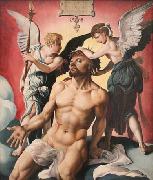 |
Maarten van Heemskerck -- Click Here
|
|
(1498 - 1 October 1574) was a Dutch portrait and religious painter, known for his depictions of the Seven Wonders of the World.
He was born at Heemskerk, North Holland, halfway between Alkmaar and Haarlem.
His father was a small farmer, Jacob Willemsz. van Veen (whose portrait he painted). According to his biography, written by Karel van Mander, he was apprenticed to Cornelis Willemsz in Haarlem. Recalled after a time to the paternal homestead and put to the plough or the milking of cows, young Heemskerk took the first opportunity that offered to run away, and demonstrated his wish to leave home for ever by walking in a single day the 80 km which separate his native hamlet from the town of Delft. There he studied under Jan Lucasz whom he soon deserted for his contemporary Jan van Scorel of Haarlem. Even today, many of Heemskerck's paintings are mistaken for work by van Scorel. He boarded at the home of the wealthy Pieter Jan Foppesz (the van Mander spelling is Pieter Ian Fopsen), curate of the Sint-Bavokerk. He knew him because he owned a lot of land in Heemskerck. This is the same man whom he painted in a now famous family portrait, considered the first of its kind in a long line of Dutch family paintings.
|
|
 |
Ludwig Hans Fischer -- Click Here
|
|
Austrian , 1848 - 1915 ) |
|
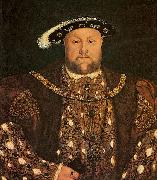 |
Lucas Horenbout -- Click Here
|
|
Lucas Horenbout, often called Hornebolte in England, (Ghent c. 1490 to 1495 - London 1544) was a Flemish artist who moved to England in the mid-1520s and worked there as "King's Painter" and court miniaturist to King Henry VIII from 1525 until his death. He was trained in the final phase of Netherlandish illuminated manuscript painting, in which his father Gerard was an important figure, and was the founding painter of the long and distinct English tradition of portrait miniature painting. He has often been suggested as the Master of the Cast Shadow Workshop, who produced royal portraits on panel in the 1520s or 1530s.
Horenbout trained in Ghent with his father, Gerard Horenbout, becoming a Master of the local Guild of Saint Luke in 1512. Gerard was an important Flemish manuscript illuminator in the dying days of that art-form, who had been court painter, from 1515 to about 1522, to Margaret of Austria, Regent of the Netherlands. Margaret was twice sister-in-law to Catherine of Aragon, still Henry's (first) Queen when the Horenbouts came to England. Gerard is sometimes identified with the "Master of James IV of Scotland", one of the many artistic personalities identified as a significant illuminator in the Ghent-Bruges school of the period, to whom no historical person can be attached.
Horenbout came over to England at an unknown date with, or perhaps before, his sister Susanna and his father. It has been suggested that their move was in connection with an attempt by the King, or possibly Cardinal Wolsey, to revive English manuscript illumination by establishing a workshop in London, but this is controversial. His father Gerard is first recorded in England in 1528, and later returned to the Continent, probably after 1531; he had died in Ghent by 1540. Susanna, who was also an illuminator, is recorded in 1529 as married to a John Palmer and in England.
Lucas is documented in England from September 1525, when he was first paid by the King as "pictor maker". By 1531 he was described as the "King's Painter", and this appointment was confirmed for life in June 1534, when he became a "denizen" - effectively a naturalised citizen. Horenbout was very well paid, at sixty-two pounds and ten shillings (but only thirty-three pounds and six shillings according to Richard Gay) per year, a "huge" sum according to Strong, and better than Holbein's thirty pounds a year in his period as Henry's court painter. He was granted a "tenement" in Charing Cross, and permitted to take on four foreign journeyman. Lucas was buried at Saint Martin in the Fields and left a wife and daughter, Margaret and Jacquemine. Margaret was paid sixty shillings three years later by Queen Catherine Parr for some paintings. |
|
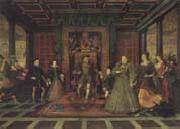 |
Lucas de Heere -- Click Here
|
|
1534-1584,Painter, tapestry designer, draughtsman and poet. He was probably trained by his parents. The suggestion that he became a member of the Ghent Guild of St Luke before 1540 was derived from an incorrect interpretation of the Guild records for 1574-5. Van Mander recorded that, as a boy, de Heere accompanied his father on his trips to the stone-quarries of the Meuse region, where he made topographical drawings. Lucas was sent to Frans Floris's studio c. 1555 or shortly before to complete his training, and he may have collaborated with his master on tapestry cartoons and stained-glass designs, although no cartoons or preparatory drawings survive. During this period de Heere also became noted as a poet in the local rhetoricians' chambers. His father's influence helped him to gain commissions in Ghent from 1555, and, according to Marcus van Vaernewijck (1568), he worked on new stained-glass windows for the St Janskerk in Ghent in the same year. |
|
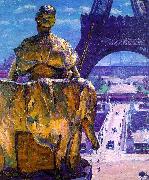 |
Louis Welden Hawkins -- Click Here
|
|
British
1849-1910
Louis Welden Hawkins Galleries
Louis Welden Hawkins was born in Germany ( 1 July 1849 ). His mother was an Austrian Baroness, his father Englishman. Hawkins moved soon to France and took later French nationality. Hawkins attended the famous Acad??mie Julian in Paris. Hawkins became famous after his expositions in the Salon de la Societe des Artistes Francais. His first work was shown in the Salon in 1881. After that, expositions followed at the Salon de la Societe des Beaux Artes (1894-1911), the Salon de la Rose-Croix (1894-95) and La Libre Esthetque in Brussels. He spended his last years in Brittany, where he painted mostly landscapes.
Louis Welden Hawkins died in 1910 and was honoured a year later at the Salon Nationale. |
|
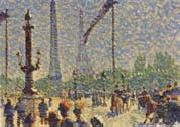 |
Louis Hayet -- Click Here
|
|
French, 1864-1940.French painter and writer. He was largely self-taught and initially earned his living as an itinerant painter-decorator. In 1881 he met Lucien and Camille Pissarro while painting landscapes near Pontoise and through them met Paul Signac in 1885 and Seurat in 1886. After a years military service at Versailles, Hayet moved to Paris in the autumn of 1887. There he began to apply to his paintings Eug?ne Chevreuls theories of colour contrast with which he had become familiar by 1881. A gifted watercolour painter, he also experimented with the ancient technique of wax encaustic, painting on a prepared cotton that allowed light to filter through. The paint surface of works such as The Grange (Beauchamp, France, priv. col., see 1983 Pontoise exh. cat., no. 1) retains a vivid tonal freshness, while the subject of crowds of peasants gathered before the Paris agricultural market reveals a debt to Pissarro. During the second half of the 1880s he became obsessed with the notion of passage |
|
|
|
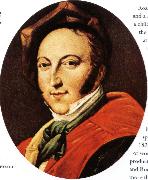 |
leigh hunt -- Click Here
|
|
British writer who defended the romanticism of Keats and Shelley (1784-1859)
Synonyms: Hunt, James Henry Leigh Hunt |
|
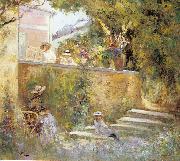 |
Lebasque, Henri -- Click Here
|
|
French Painter, 1865-1937
was born in 1865 at Champign (Maine-et-Loire). He started his education at the Ecole des Beaux-Arts d'Angers, and moved to Paris in 1886. Here, Lebasque started studying under Leon Bonnat, and assisted Humbert with the decorative murals at the Pantheon. Around this time, Lebasque met Camille Pissarro and Auguste Renoir, who later would have a large impact on his work. Lebasque's vision was coloured by his contact with younger painters, especially Edouard Vuillard and Pierre Bonnard, founders of the The Nabis' Group and the Intimists who first favoured the calm and quietude of domestic subject matter. From his first acquaintance with Georges Seurat and Paul Signac, Lebasque learnt the significance of a colour theory which stressed the use of complementary colours in shading. Lebasque was a founding member of the Salon d'Automne in 1903 with his friend Henri Matisse. Two years later a group of artists exhibited there including Georges Rouault, Andre Derain, Edouard Vuillard and Henri Matisse while keeping solid links with other artists such as Gustave Rouault, Raoul Dufy, Louis Valtat and especially Henri Manguin, who made him discover the south of France. His time in South of France would lead to a radical transformation in Lebasque's paintings, changing his colour palette forever. Other travels included the Vendee, Normandie and Brittany, although Lebasque would always prefer the small idyllic villages of the South of France. Lebasque had some commercial success during his lifetime. He worked on the decorations at the theatre of the Champs-Elyses and of the Transatlantique sealiner. |
|
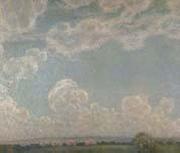 |
Le Sidaner Henri -- Click Here
|
|
Ile Maurice 1862-Versailles,1939
was an impressionist painter born to a French family in Port Louis, Mauritius. In 1870 he and his family settled in Dunkirk. Le Sidaner received most of his tutelage from the Ecole des Beaux-Arts under the instruction of Alexandre Cabanel but later broke away due to artistic differences. He traveled extensively throughout France and also visited many cities around the globe such as London, New York, Venice and Paris as well as some small villages throughout Europe. Le Sidaner exhibited at the Salon, the Galeries Georges Petit in Paris and the Goupil Gallery in London. He lived in Gerberoy, France. Le Sidaner's work was referenced in Marcel Proust's novel In Search of Lost Time. |
|
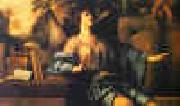 |
Laurent de la Hyre -- Click Here
|
|
1606-1656
French Laurent de la Hyre Galleries
He became a pupil of Georges Lallemand and studied the works of Primaticcio at Fontainebleau, but never visited Italy. La Hyre is associated with the transitional period before the introduction of the French Baroque by Simon Vouet.
His picture of Pope Nicholas V opening the crypt in which he discovers the corpse of St. Francis of Assisi standing (located at the Louvre) was executed in 1630 for the Capuchin friars of the Marais; its gravity and sobriety seems to have been influential for the next generation of French painters, particularly Eustache Le Sueur. The Louvre contains eight other works, and paintings by La Hyre are in the museums of Strasburg, Rouen and Le Mans.
Laurent de La Hyre: Perspective (drawing).His drawings, of which the British Museum possesses a fine example, Presentation of the Virgin in the Temple, are treated as seriously as his paintings, and sometimes show simplicity and dignity of effect. The example of the Capuchins, for whom he executed several other works in Paris, Rouen and Fecamp, was followed by the goldsmith's company, for whom he produced in 1635 St. Peter healing the Sick (Louvre) and the Conversion of St Paul in 1637. In 1646, with eleven other artists, he founded the French Royal Academy of Painting and Sculpture.
Richelieu called La Hyre to the Palais Royal; Pierre S??guier, Gedeon Tallemant des R??aux and many others entrusted him with important works of decoration; for the Gobelins he designed a series of large compositions. La Hyre painted also a great number of portraits, and in 1654 united in one work for the town-hall of Paris those of the principal dignitaries of the municipality. |
|
 |
Landseer, Edwin Henry -- Click Here
|
|
RA (7 March 1802 - 1 October 1873) was an English painter, well known for his paintings of animalseparticularly horses, dogs and stags. The best known of Landseer's works, however, are sculptures: the lions in Trafalgar Square, London.
|
|
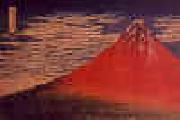 |
Katsushika Hokusai -- Click Here
|
|
Japanese
1760-1849
Katsushika Hokusai Gallery
was a Japanese artist, ukiyo-e painter and printmaker of the Edo period. In his time, he was Japan's leading expert on Chinese painting.[2] Born in Edo (now Tokyo), Hokusai is best-known as author of the woodblock print series Thirty-six Views of Mount Fuji which includes the iconic and internationally recognized print, The Great Wave off Kanagawa, created during the 1820s. Hokusai created the "Thirty-Six Views" both as a response to a domestic travel boom and as part of a personal obsession with Mount Fuji.[3] It was this series, specifically The Great Wave print and Fuji in Clear Weather, that secured Hokusai??s fame both within Japan and overseas. As historian Richard Lane concludes, ??Indeed, if there is one work that made Hokusai's name, both in Japan and abroad, it must be this monumental print-series...?? While Hokusai's work prior to this series is certainly important, it was not until this series that he gained broad recognition and left a lasting impact on the art world. It was The Great Wave print that initially received, and continues to receive, acclaim and popularity in the Western world. |
|
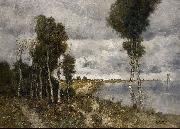 |
Karl Heffner -- Click Here
|
|
painted Am Ufer in 1849 - 1925 |
|
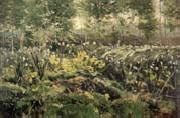 |
Karl Hagemeister -- Click Here
|
|
German, 1848-1933,German painter. He studied from 1871 at the Kunstschule in Weimar under Friedrich Preller, who introduced him to the principles of classical landscape painting. In 1873 he began to develop a more modern approach when he met Carl Schuch at the Hintersee, near Berchtesgaden; he immediately became his pupil and later wrote Schuch's biography. Schuch introduced Hagemeister to the Leibl circle (see LEIBL, WILHELM). He travelled to the Netherlands and Belgium (1873-4), Italy (1876) and France (1884-5), often accompanying Schuch and, in the early journeys, Wilhelm Trebner. His approach to landscape changed from classical Naturalism to 'pure painting', a more formalist approach in which purely pictorial qualities were given priority over naturalistic representation, as in Lake Shore (c. 1900; Schweinfurt, Samml. Schefer). His brushwork became broader, his depiction of objects became increasingly summary, and his colours lighter and cooler. Absorbing the influence of Japanese art through the interpretations of the French Impressionists, and following trends in international Art Nouveau, Hagemeister developed an individual variant of Jugendstil. His pictures were composed in accordance with decorative rather than naturalistic principles and became primarily ornamental, as in White Poppy |
|
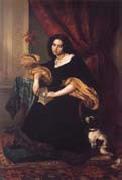 |
Julius Hubner -- Click Here
|
|
1806 Oels-1882 Loschwitz ,was a German historical painter of the Dusseldorf school. He was also known as a poet and the father of Emil Hubner, a distinguished classical scholar. Hubner was born at Oels in Silesia, studied at the Academy School in Berlin and under Schadow there and in Dusseldorf. He first attracted attention by his picture of "Ruth and Boaz" (1825). He traveled in Italy and resided for the most part at Dusseldorf until 1839. In that year he settled at Dresden, becoming a professor in the Academy of Arts in 1841 and director of the Gallery of Paintings in 1871. He obtained the great gold medal at Brussels in 1851. He died in Loschwitz. |
|
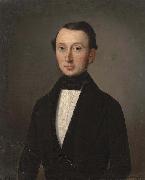 |
Julien Hudson -- Click Here
|
|
(1811-1844) was a 19th Century free man of color who lived in New Orleans. He was a successful painter and art teacher. He is known as the first African American or French Creole of Color operating in America by whom a self-portrait was found. |
|
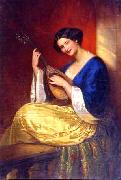 |
Julie Wilhelmine Hagen-Schwarz -- Click Here
|
|
(born October 27, 1824 near Tartu - died Tartu October 7, 1902) was an Estonian painter of Baltic German origin. She studied in Dresden with Friedrich Gonne and later in Munich with Johann Moritz Rugendas. |
|
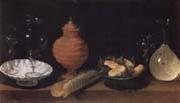 |
Juan van der Hamen y Leon -- Click Here
|
|
Spanish Baroque Era Painter, 1596-1631, was a Spanish painter, a master of the still life paintings, also called bodegones. During his lifetime, he was prolific and versatile, painting allegories, landscapes, and large-scale works for churches and convents. However, today he is remembered mostly for his still lifes. In the 1620s, He popularized still life painting in Madrid.Juan van der Hamen y (Gemez de) Leen was born in Madrid in 1596 but he was baptized late on April 8, 1596 in Madrid, therefore, he must had been born there just days before that date. He was the son of Jehan van der Hamen, a Flemish courtier, who had moved to Madrid from Brussels before 1586, and Dorotea Whitman Gemez de Leen, a half-Flemish mother of noble Toledan ancestry [1]. Van der Hamen and his two brothers Pedro and Lorenzo (both of whom were writers) emphasized their Spanish roots by using all or part of their maternal grandmother's family name, Gemez de Leen.. The painter's father, Jan van der Hamen, had come to Spain, as an archer, to the court of Philip II were he settled, married, and his children were born. According to 18th-century sources, the artist's father had also been a painter, but there is no evidence for this. Juan van der Hamen inherited his father's honorary positions at court and also served as unsalaried painter of the king. Van der Hamen's artistic activity in the service of the crown is first recorded on 10 September 1619, when he was paid for painting a still-life for the country palace of El Pardo, to the north of Madrid. |
|
 |
joseph-Louis-Hippolyte Bellange -- Click Here
|
|
b.1800-d.1866 |
|
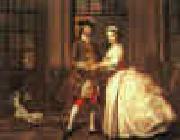 |
Joseph Highmore -- Click Here
|
|
1692-1780
British
Joseph Highmore Gallery
Joseph Highmore (3 June 1692?C1780), was a British portrait and historical painter.
Born in London in 1692, he displayed early a strong ability, particularly for the fine arts, which was discouraged by his family, who rather saw him as a solicitor. However, all his spare time was dominated by his favourite pursuit and, upon the ending of his clerkship at the age of seventeen, he abandoned law and resolved to trust in future to his talents as a painter alone for his chance of fame and fortune.
His gamble paid off and he continued to improve his reputation and upon the revival of the Order of the Bath in 1725, he was selected to paint the knights in full costume. The years 1732 to 1734 were spent on a tour of the Netherlands and France and on his return to England, he applied himself to perfecting his talent, which continued for the next 50 years of his life, until his death.
Among his best works are biblical "Histories", historical painting being a style which Highmore had picked up on his travels in France. One such biblical painting is Hagar and Ishmael, which was donated to the Foundling Hospital for the purpose of decorating its Court Room (the room where the Court of Governors met). The painting is still part of the Foundling Hospital art collection and can now be seen at the Foundling Museum in London.
As an author, he was best known for the rather longwindedly titled Critical Examination of Reubens' two Paintings in the Banqueting House and Observations on Bodwell's Pamphlet against Christianity. |
|
 |
Joseph Heintz the Elder -- Click Here
|
|
the Elder (Basle, 11 June 1564 - near Prague, Bohemia, October 1609) was a Swiss painter, draftsman and architect.
He appears to have been a pupil of Hans Bock, and to have educated himself by diligent practice in copying the works of Hans Holbein the younger. Between 1585 and 1587 he lived in Rome, registering himself a pupil; to Hans von Aachen. He next settled in Bohemia in 1591, and was at once appointed court painter to Rudolf II, but he remained in Prague for two years only, as in 1593 he was commissioned to make some copies from the antique for the emperor, and for that purpose went to Rome, where he spent some years. In 1604 we hear of him in Augsburg, and from the time we know little of his history, until his decease is recorded in a village outside of Prague.
Heintz's paintings included religious images, portraits, and, following the emperor's taste, erotic mythological themes. They were at one time in high demand, but later on suffered an eclipse. Among them are a family portrait in Berne and that of Rudolf II in Vienna. He was constantly investigating subtle questions of light, and almost all of his landscapes show the interest he took in this technical matter. A notable work by him is the Rape of Proserpine, which hangs in the Dresden Gallery, and was engraved by Lukas Kilian; in the same gallery are two other works, Lot and His Daughters and Ecce Homo. Finally there is his portrait of Constance of Austria. He had a son, who bore the same name, and who painted a few religious pictures; several of these works hitherto attributed to the son are now believed to be late productions by the father.
|
|
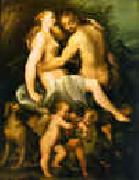 |
Joseph Heintz -- Click Here
|
|
1564-1609
Swiss
Painter, draughtsman, architect and artistic adviser, son of Daniel Heintz.
He began his training as a painter c. 1579 with Hans Bock I (c. 1550-c. 1623) in Basle. His first surviving drawings (1580) show something akin to Holbein manner in his stained-glass window designs. After completing his apprenticeship he went c. 1584 to Rome, where he studied the works of antiquity, and those of Raphael, Michelangelo, Polidoro da Caravaggio and others. In 1587 he went via Florence to Venice, absorbing the works of Tintoretto, Titian and Veronese. In autumn 1591 the Holy Roman Emperor Rudolf II summoned him as portraitist and court painter to Prague but soon sent him back to Italy, where he drew ancient statues in addition to producing his own work and acting as art agent for the Emperor. In 1592-5 he stayed mainly in Rome, then returned to Prague. In the following years he worked indefatigably as a draughtsman, painter, architect and artistic adviser, moving between Augsburg and Prague. |
|
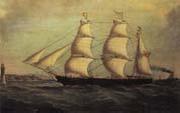 |
Joseph heard -- Click Here
|
|
British painter, 1799-1859 |
|
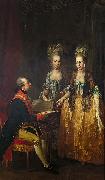 |
Joseph Haunzinger -- Click Here
|
|
Josef Hauzinger: Marie Antoinette, Erzherzog Maximilian und Ludwig XVI., Ol auf Leinwand, um 1776 |
|
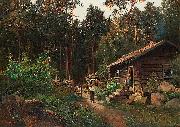 |
Josefina Holmlund -- Click Here
|
|
(1827 -1905 ) - Painter
|
|
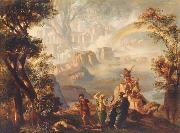 |
Josef Hoffmann -- Click Here
|
|
painted Outside the Hall of the Gibichungs in 1876 |
|
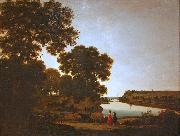 |
Joris van der Haagen -- Click Here
|
|
(ca. 1615 - The Hague, 23 May 1669 (buried)) was a Dutch Golden Age painter specialized in landscapes.
Contents
It is unclear where Joris van der Haagen was born, either in Arnhem or Dordrecht, but archival evidence shows that he started his drawing career in Arnhem. He probably learned to paint from his father, the painter Abraham van der Haagen. When his father died he moved in 1639 to the Hague, where he joined the Guild of St. Luke in 1643. A year later he became honorary citizen of The Hague. In 1656 he was one of the founding members of the Confrerie Pictura, which was located on the Princessegracht in the Hague. The painting he made of the Princessegracht at this time probably shows the original building, which has since been renovated beyond recognition.
|
|
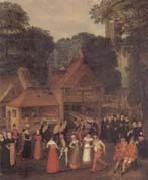 |
joris Hoefnagel -- Click Here
|
|
Flemish Northern Renaissance Manuscript Illuminator, 1542-ca.1600,Flemish illuminator and draughtsman. He was the last of the great Flemish manuscript illuminators and the foremost topographical draughtsman of his age. His work forms a critical link between earlier manuscript illumination and ornamental design and the genre of floral still-life painting, |
|
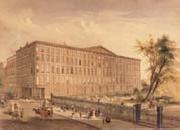 |
John William Hill -- Click Here
|
|
English Painter, 1812-1879,Painter and illustrator, son of John Hill. At the age of seven he moved to Philadelphia, PA, with his family. In 1822 he moved to New York, where he was apprenticed to his father for seven years. During this time, he worked on the aquatint plates for William Guy Wall's Hudson River Portfolio (1821-5), which influenced his early paintings. |
|
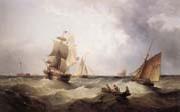 |
John ward of hull -- Click Here
|
|
British, 1798-1849 |
|
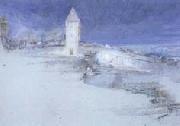 |
John Ruskin,HRWS -- Click Here
|
|
1819-1900
English academic and critic, who had an enormous influence not only on architectural style but on the ways in which standards of aesthetics were judged. He used an Evangelical and polemical tone in his writings that not only reached a mass audience but received the approval of the Ecclesiologists. Initially encouraged by J. C. Loudon, he contributed to some of Loudon's publications, but his key works date from the late 1840s and 1850s. The Gothic Revival was well established when Ruskin published The Seven Lamps of Architecture (1849), which was an immediate success, encapsulating the mood of the period rather than creating new ideas. He argued that architecture should be true, with no hidden structure, no veneers or finishes, and no carvings made by machines, and that Beauty in architecture was only possible if inspired by nature. As exemplars worthy of imitation (he argued that the styles known to Man were quite sufficient, and that no new style was necessary) he selected Pisan Romanesque, early Gothic of Western Italy, Venetian Gothic, and English early Second Pointed as his paradigms. In the choice of the last, the style of the late C13 and early C14, he was echoing A. W. N. Pugin's preferences as well as that of most ecclesiologically minded Gothic Revivalists such as G. G. Scott. The Stones of Venice (1851C3) helped to promote that phase of the Gothic Revival in which Continental (especially Venetian) Gothic predominated. Deane and Woodward's University Museum, Oxford (1854C60), is an example of Venetian or Ruskinian Gothic. In particular, structural polychromy, featuring colour in the material used, rather than applied, was popularized by Ruskin's writings. |
|
 |
John Rogers Herbert -- Click Here
|
|
English historical painter and portraitist .
British, 1810-1890.
was an English painter who is most notable as a precursor of Pre-Raphaelitism. Herbert was born in Maldon, Essex. In 1825, he moved to London to study at the Royal Academy. His early works were influenced by the troubadour style of Richard Parkes Bonington. Subjects showed the influence of Byron and exotic episodes of Venetian history. Haydee (1834) depicted the heroine of Byron's poem Don Juan. Herbert's first major success was The Appointed Hour (1835), depicting a melodramatic scene in which a Venetian man lies murdered at the place appointed for a tryst with his lover. The work became a popular engraving. Herbert followed it with other dramatic subjects such as A Prisoner of Condottieri Freed (1836) and Desdemona asks for Cassio (1838). After he was chosen to paint a portrait of Princess Victoria, before she became queen, he became a favourite portrait painter of the aristocracy. Around this time, he came under the influence of the architect William Payne, a convert to Catholicism. In 1840, Herbert also converted to the Catholic Church. He then painted mainly religious subjects in a style influenced by the artists of the Nazarene movement. Herbert was elected to membership of the Royal Academy in 1846. Herbert's paintings The First Introduction of Christianity into Great Britain (1842) and Our Saviour Subject to his Parents in Nazareth (1847) were the inspiration for the two most important early works of William Holman Hunt and John Everett Millais, founders of Pre-Raphaelitism. The two paintings, Hunt's A Converted British Family Sheltering a Christian Missionary and Millais' Christ in the House of His Parents were exhibited at the RA in 1850 to great controversy. |
|
|
|
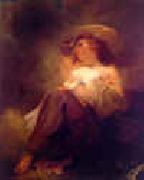 |
John Hoppner -- Click Here
|
|
1758-1810
British
John Hoppner Galleries
John Hoppner (April 4?, 1758 - January 23, 1810), English portrait-painter, was born in Whitechapel.
His father was of German extraction, and his mother was one of the German attendants at the royal palace. Hoppner was consequently brought early under the notice and received the patronage of George III, whose regard for him gave rise to unfounded scandal. As a boy he was a chorister at the royal chapel, but showing strong inclination for art, he in 1775 entered as a student at the Royal Academy. In 1778 he took a silver medal for drawing from the life, and in 1782 the Academy's highest award, the gold medal for historical painting, his subject being King Lear.
He first exhibited at the Royal Academy In 1780. His earliest love was for landscape, but necessity obliged him to turn to the more lucrative business of portrait painting. At once successful, he had throughout life the most fashionable and wealthy sitters, and was the greatest rival of the growing attraction of Lawrence. Ideal subjects were very rarely at tempted by Hoppner, though a "Sleeping Venus," "Belisarius," "Jupiter and Io," a "Bacchante" and "Cupid and Psyche" are mentioned among his works. The prince of Wales visited him especially often, and many of his finest portraits are in the state apartments at St. James's Palace, the best perhaps being those of the prince, the duke and duchess of York, of Lord Rodney and of Lord Nelson, Among his other sitters were Sir Walter Scott, the Duke of Wellington, Frere and Sir George Beaumont.
Competent judges have deemed his most successful works to be his portraits of women and children. A Series of Portraits of Ladies was published by him in 1803, and a volume of translations of Eastern tales into English verse in 1805. The verse is of but mediocre quality. In his later years Hoppner suffered from a chronic disease of the liver. He was confessedly an imitator of Reynolds. When first painted, his works were much admired for the brilliancy and harmony of their colouring, but the injury due to destructive mediums and lapse of time which many of them suffered caused a great depreciation in his reputation. The appearance, however, of some of his pictures in good condition has shown that his fame as a brilliant colourist was well founded. His drawing is faulty, but his touch has qualities of breadth and freedom that give to his paintings a faint reflection of the charm of Reynolds. Hoppner was a man of great social power, and had the knowledge and accomplishments of a man of the world.
The best account of Hoppner's life and paintings is the exhaustive work by William McKay and W Roberts (1909 |
|
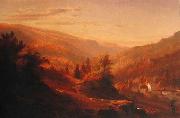 |
John Hermann Carmiencke -- Click Here
|
|
Johann Hermann Carmiencke or John Hermann Carmiencke (born at Hamburg in 1810; died at Brooklyn, New York on 15 June 1867) was a landscape painter and etcher.
|
|
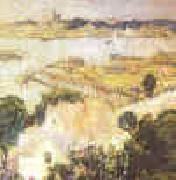 |
John Henry Twatchman -- Click Here
|
|
1853-1902
John Henry Twatchman Galleries |
|
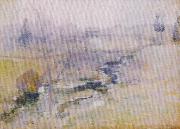 |
John Henry Twachtman -- Click Here
|
|
American Impressionist Painter, 1853-1902
American painter and printmaker. He began as a painter of window-shades but developed one of the most personal and poetic visions in American landscape painting, portraying nature on canvases that were, in the words of Childe Hassam, 'strong, and at the same time delicate even to evasiveness'. His first artistic training was under Frank Duveneck, with whom he studied first in Cincinnati and then in Munich (1875-7). His absorption of the Munich style, characterized by bravura brushwork and dextrous manipulation of pigment, with the lights painted as directly as possible into warm, |
|
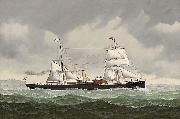 |
John Henry Mohrmann -- Click Here
|
|
painted The Belgian steamer Amelie bound for Spain in |
|
|
|
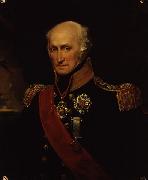 |
John Hayter -- Click Here
|
|
(1800-1895) was an English portrait painter. He was the second son of the miniaturist Charles Hayter and brother of Sir George Hayter, also a portaitist. He entered the Royal Academy schools in 1815, and began to exhibit at the Royal Academy in the same year. He also exhibited work at the British Institution and the Royal Society of British Artists. Hayter established himself during the 1820s, with portraits of notable figures such as the Duke of Wellington and the opera singer, Giuditta Pasta. His portrait drawings, in chalks or crayons, became particularly popular, a number of them being engraved for The Court Album, Portraits of the female aristocracy (1850-57). |
|
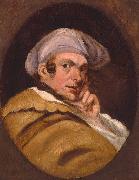 |
John Hamilton Mortimer -- Click Here
|
|
ARA (1740-1779) was a British Neoclassical figure and landscape painter and printmaker, known for romantic paintings set in Italy, works depicting conversations, and works drawn in the 1770s portraying war scenes, similar to those of Salvator Rosa.
Mortimer became President of the Society of Artists in 1774, five years before his death, at age 39.
John Hamilton Mortimer was born on 17 September 1740 at Eastbourne. Not much is known about his family, other than that his father was a customs officer, a dealer in flour and owner of several mills. By 1757, while he was still young, he was studying in London at the Duke of Richmond's Academy. During this time he became a friend of Joseph Wright, a fellow student at the Academy - a friendship which would endure throughout Mortimer's life. Mortimer is also known to have had some professional relationship with the artist Samuel Ireland, who was involved with etching Mortimer's work. At the St Martin's Lane Academy his fellow students included Thomas Jones and William Pars. In 1759 Mortimer won a first prize for a study after Michelangelo's Bacchus and a second prize for a life drawing.
He began to display his works on a regular basis from the early 1760s onwards. He became an active member of the Society of Artists and President of the Society in 1774. |
|
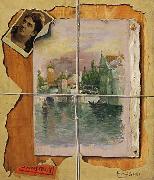 |
John Haberle -- Click Here
|
|
(1856-1933) was a 19th-century American painter in the trompe l'oeil (literally, "fool the eye") style. His still lifes of ordinary objects are painted in such a way that the painting can be mistaken for the objects themselves. He is considered one of the three major figuresetogether with William Harnett and John F. Petoepracticing this form of still life painting in the United States in the last quarter of the 19th century.
Haberle was born in New Haven, Connecticut; his parents were Swiss immigrants. At the age of 14 he left school to apprentice with an engraver. He also worked for many years as an exhibit preparator for the Peabody Museum of Natural History at Yale University. His career as a painter began in 1887.
His style is characterized by a meticulous rendering of two-dimensional objects. He is especially noted for his depictions of paper objects, including currency. Art historian Alfred Frankenstein has contrasted Haberle's work with that of his contemporaries:
Peto is moved by the pathos of used-up things. Haberle is wry and wacky, full of bravado, self-congratulating virtuosity, and sly flamboyance. He works largely within an old tradition, that of the trompe l'oeil still life in painted line ... It is poles away from Harnett's sumptuosity, careful balances, and well-modeled volumes, and is equally far from Peto's sensitivity in matters of tone and hue.
A Bachelor's Drawer (1890-94) is typical of his approach: various papers, including currency, postage stamps, photos, playing cards, tickets, and newspaper clippings, are shown affixed to an essentially planar surface. Other objectseeyeglasses, a comb, a pipe, matches, and so oneare shallow enough in volume so as not to spoil the illusion.
Like Harnett, he was warned by the Secret Service to cease and desist painting paper money, but he continued to do so throughout his years of greatest productivity; examples include The Changes of Time (1888) and Can You Break a Five? (c. 1885). He painted other subjects such as Slate (c. 1895), a bin of peanuts in Fresh Roasted (1887), The Clay Pipe (1889), and the huge Grandma's Hearthstone (1890), in the collection of the Detroit Institute of Arts.
By the turn of the century, problems with his eyes diminished Haberle's activity as an artist. Among his later works are paintings of flowers executed in a looser style, and in 1909 he painted his final trompe l'oeil, the large Night, in the collection of the New Britain Museum of American Art, New Britain, Connecticut. Haberle died in 1933.
|
|
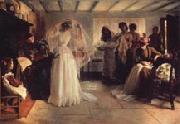 |
John H F Bacon -- Click Here
|
|
b. 1740, London, d. 1799, London |
|
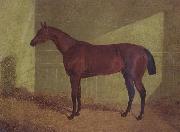 |
John Frederick Herring -- Click Here
|
|
British 1795-1865
was a painter, sign maker and coachman in Victorian England.John F. Herring, Sr. is the painter of the 1848 "Pharoah's Chariot Horses" (archaic spelling "Pharoah"). He amended his signature "SR" (senior) in 1836, with the growing fame of his teenage son John Frederick Herring, Jr.Herring, born in London in 1795, was the son of a London merchant of Dutch parentage, who had been born overseas in America. The first eighteen years of Herring's life were spent in London, England, where his greatest interests were drawing and horses.In the year 1814, at the age of 18, he moved to Doncaster in the north of England, arriving in time to witness the Duke of Hamilton's "William" win the St. Leger Stakes horserace. By 1815, Herring had married Ann Harris; his sons John Frederick Herring, Jr., Charles Herring, and Benjamin Herring were all to become artists, while his two daughters, Ann and Emma, both married painters. In Doncaster, England, Herring was employed as a painter of inn signs and coach insignia on the sides of coaches,and his later contact with a firm owned by a Mr. Wood led to Herring's subsequent employment as a night coach driver. Herring spent his spare time painting portraits of horses for inn parlors, and he became known as the "artist coachman" (at the time).Herring's talent was recognized by wealthy customers, and he began painting hunters and racehorses for the gentry. In 1830, John Frederick Herring, Senior left Doncaster for Newmarket, England, where he spent three years before moving to London, England. During this time, Herring might have received tuition from Abraham Cooper. In London, Herring experienced financial difficulties and was given financial assistance by W. T. Copeland, who commissioned many paintings, including some designs used for the Copeland Spode bone china. In 1840-1841, Herring visited Paris, painting several pictures, on the invitation of the Duc d'Orleans. |
|
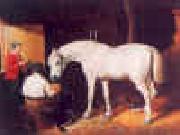 |
John F Herring -- Click Here
|
|
1795-1865
British
Herring, born in London in 1795, was the son of a London merchant of Dutch parentage, who had been born overseas in America. The first eighteen years of Herring life were spent in London, England, where his greatest interests were drawing and horses. In the year 1814, at the age of 18, he moved to Doncaster in the north of England, arriving in time to witness the Duke of Hamilton William win the St. Leger Stakes horserace. By 1815, Herring had married Ann Harris; his sons John Frederick Herring, Jr., Charles Herring, and Benjamin Herring were all to become artists, while his two daughters, Ann and Emma, both married painters.
In Doncaster, England, Herring was employed as a painter of inn signs and coach insignia on the sides of coaches, and his later contact with a firm owned by a Mr. Wood led to Herring subsequent employment as a night coach driver. Herring spent his spare time painting portraits of horses for inn parlors, and he became known as the artist coachman (at the time). Herring talent was recognized by wealthy customers, and he began painting hunters and racehorses for the gentry.
In 1830, John Frederick Herring, Senior left Doncaster for Newmarket, England, where he spent three years before moving to London, England. During this time, Herring might have received tuition from Abraham Cooper. In London, Herring experienced financial difficulties and was given financial assistance by W. T. Copeland, who commissioned many paintings, including some designs used for the Copeland Spode bone china. In 1840-1841, Herring visited Paris, painting several pictures, on the invitation of the Duc d Orleans (the Duke of Orleans), son of the French King Louis-Phillipe.
In 1845, Herring was appointed Animal Painter to HRH the Duchess of Kent, followed by a subsequent commission from the ruling Queen Victoria, who remained a patron for the rest of his life.
In 1853, Herring moved to rural Kent in the southeast of England and stopped painting horse portraits. He spent the last 12 years of his life at Meopham Park near Tonbridge, where he lived as a country squire. He then broadened his subject matter by painting agricultural scenes and narrative pictures, as well as his better known sporting works of hunting, racing and shooting.
A highly successful and prolific artist, Herring ranks along with Sir Edwin Landseer as one of the more eminent animal painters of mid-nineteenth (19th) century Europe. The paintings of Herring were very popular, and many were engraved, including his 33 winners of the St. Leger and his 21 winners of the Derby. Herring exhibited at the Royal Academy from 1818-1865, at the British Institution from 1830-1865, and at the Society of British Artists in 1836-1852, where Herring became Vice-President in 1842.
Herring created hundreds of paintings which were acknowledged during his lifetime. |
|
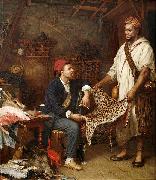 |
John Evan Hodgson -- Click Here
|
|
painted The french naturalist in Algiers 1879 |
|
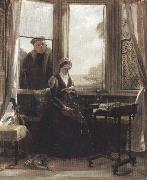 |
John callcott horsley,R.A. -- Click Here
|
|
1817-1903
English painter. A nephew of the landscape painter Augustus Wall Callcott, and later Isambard Kingdom Brunel's brother-in-law, he was born into the artistic establishment. He was educated at Henry Sass's Academy and at the Royal Academy. Although he executed two frescoes for the Houses of Parliament (The Spirit of Religion, 1847; London, House of Lords; Satan Wounded by Ithuriel's Lance, 1848; London, Pal. Westminster), his career began with portraiture. Success later came with literary subjects, |
|
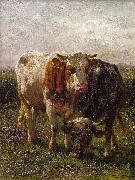 |
Johannes Hubertus Leonardus de Haas -- Click Here
|
|
(25 March 1832 - 4 August 1908) was a Dutch animal and landscape painter, and a peripheral figure of the Hague School.
Born at Hedel, De Haas spend his youth in Amsterdam where he got his first art education at evening-classes at the Koninklijke Academie. Consequently he moved to Haarlem where he was apprenticed to the artist Pieter Frederik van Os. During his stay in Haarlem he befriended Paul Gabriël and Hendrik Dirk Kruseman Van Elten who were also studying with Van Os.
In 1853, together with his two friends, De Haas decided to go to Oosterbeek. Here they came into contact with the influential landscape painter Johannes Warnardus Bilders and the group of painters which had gathered around him, many of whom would later be part of the Hague School. De Haas also met his future wife in Oosterbeek, Bilders' daughter, Caroline. In 1855 he received good reviews for his pictures that were exhibited in Paris from the noted art critic Jean Baptiste Gustave Planche.
In 1857 De Haas first went to Brussels, where he became friends with Willem Roelofs. De Haas frequently returned to the Netherlands and Oosterbeek for inspiration and Caroline. From 1860 his friend Gabriël also lived in Brussels, and De Haas often painted cattle in the landscapes of both Roelofs and Gabriel, fitting in perfectly with both their styles. In 1860 he won the gold medal at the exhibition of Utrecht.
From 1861 until 1869 De Haas is permanently settled in Brussels, painting mainly on the coasts of Flanders and Picardie in northern France. He married Caroline Bilders in 1862, and in 1864 they are briefly joined by her brother, the promising painter Gerard Bilders. In 1865 Caroline dies at the age of 24 of tuberculosis, leaving him with a young son. During his stay in Brussels De Haas is instrumental in passing on the style of the Barbizon school to the painters at Oosterbeek.
|
|
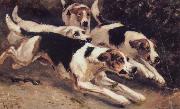 |
Johannes Frederik Hulk -- Click Here
|
|
Dutch, 1829-1911 |
|
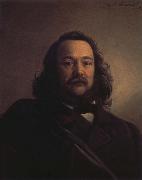 |
Johann Peter Hasenclever -- Click Here
|
|
1810 Remscheid-1853 Dusseldorf, German painter. His artistic talent was recognized in 1827, while he was at school in D?sseldorf. The same year he embarked on a course in architecture at the Akademie in D?sseldorf. In 1828 he turned to the study of history painting. After a difference of opinion over the theory of art with the Director of the Akademie, Wilhelm von Schadow, Hasenclever went home to Remscheid. There he taught himself portrait painting. An example of his work from this period is the portrait of Gertraude Scharff (1832-3; Remscheid, Dt. Werkzeugmus. & Heimatmus.). From 1832 to 1838 Hasenclever again studied at the Akademie in D?sseldorf in a painting class taught by Ferdinand Theodor Hildebrandt (1804-74). In portraits and humorous genre paintings Hasenclever found a field suited to his gifts. Pithy commentaries on the everyday life of the lower middle classes are present in all of Hasenclever's work. He was best known for subjects such as wine-tastings and cellar scenes, and he also made a series of Jobs pictures, humorous, ironic interpretations of popular life based on the poem 'Jobsiade', a grotesque and comic heroic epic written by Carl Arnold Kortum in 1784. |
|
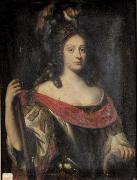 |
Johann Hulsmann -- Click Here
|
|
(1600 -1660 ) - Painter
|
|
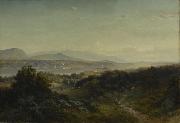 |
Johann Hermann Carmiencke -- Click Here
|
|
Johann Hermann Carmiencke, a landscape painter and etcher, was born at Hamburg in 1810. He went to Dresden in 1831 as a journeyman painter, and while there studied in Dahl's school. Thence he went to Copenhagen in 1834, where he studied in the Academy, and presently repairing to Leipsic, received instruction there from Sohonberg. Returning to Copenhagen in 1838, he proceeded to travel as an artist in Sweden, Bavaria, and the Tyrol, visiting Italy from 1845 to 1846. He was then appointed court painter to Christian VIII, for whom he executed many works. In consequence of the war, he went in 1851 to New York, where he was well received, and admitted into the Academy of Brooklyn. His works were mainly groups of mountain ranges, which were very effectively rendered, and possessed an excellent tone the execution being simple and true to nature. The 'Mountain Tarn' and the 'View on the Zillerthal' may be particularly noticed. There are thirty-five careful etchings of landscapes by him, some of which were published by the Art Association of Copenhagen in 1850 and 1851. He died at New York in 1867. |
|
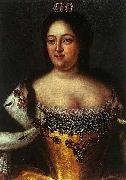 |
Johann Henrich Wedekind -- Click Here
|
|
painted Portrait of Empress Anna of Russia in 18th century
|
|
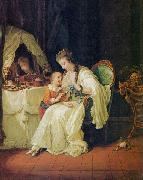 |
Johann Heinrich Wilhelm Tischbein -- Click Here
|
|
Johann Heinrich Wilhelm Tischbein, also known as Goethe-Tischbein (15 February 1751 - 26 February 1828) was a German painter. He was a descendant of the Tischbein family of painters, and a pupil of his uncle Johann Jacob Tischbein.
|
|
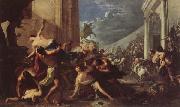 |
Johann Heinrich Schonfeldt -- Click Here
|
|
German , Biberach 1609-Augsburg 1682/83
|
|
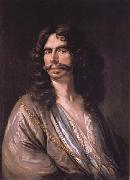 |
Johann Heinrich Roos -- Click Here
|
|
German Baroque Era Painter, 1631-1685
was a German Baroque era painter and etcher. His works are presented in various art museums worldwide. |
|
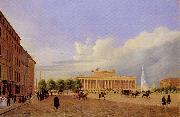 |
Johann Heinrich Hintze -- Click Here
|
|
painted Berlin, Altes Museum von der Schlossfreiheit aus in 1832 |
|
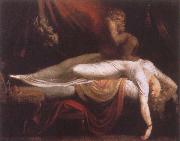 |
Johann Heinrich Fuseli -- Click Here
|
|
1741-1825
Romanticism Swiss
|
|
 |
Johann Georg von Hamilton -- Click Here
|
|
1672--1737 |
|
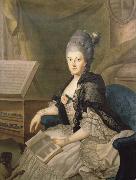 |
Johann Ernst Heinsius -- Click Here
|
|
German, 1740-1812 |
|
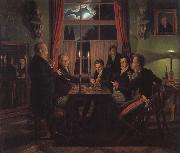 |
Johann Erdmann Hummel -- Click Here
|
|
1769 Kassel-1852 Berlin,German painter and writer. He studied from 1782 in the architecture class at the Akademie der Bildenden K?nste at Kassel and subsequently under the Kassel court painter, Wilhelm B?ttner. Hummel retained his connection with architecture, however, and this is manifested in his overpowering concern with structure and perspective. The Kassel court granted Hummel funds for travel and study in Italy and, in 1792, he went to Rome, where he joined a group of fellow Germans, including the painters Johann Christian Reinhart, Johann Martin von Rohden, Friedrich Bury and the architect Friedrich Weinbrenner. In 1796 Joseph Anton Koch joined the group. Hummel also attended the philosophical lectures given by Carl Ludwig Fernow (1763-1808) and became a friend of the archaeologist Aloys Hirt. In Rome, |
|
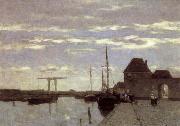 |
Johan Hendrik Weissenbruch -- Click Here
|
|
Dutch Painter, 1824-1903
Painter, cousin of Jan Weissenbruch. He referred to himself and signed his work as Jan Hendrik Weissenbruch. From 1840 he attended drawing lessons with the Norwegian painter Johannes Lew, and from 1846 he was taught by Bartholomeus J. van Hove at the Koninklijke Academie van Beeldende Kunsten in The Hague. His early paintings clearly show the influence of van Hove and Andreas Schelfhout, although it is uncertain whether he was actually taught by the latter. His father, an avid collector, owned works by both artists. |
|
|
|
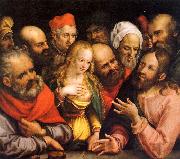 |
Jobst Harrich -- Click Here
|
|
German
1586-1617
Jobst Harrich Gallery |
|
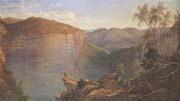 |
JH Carse -- Click Here
|
|
Australian Painter, ca.1819-1900 |
|
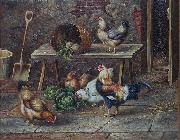 |
Jenny Hoppe -- Click Here
|
|
Jenny Hoppe (Dusseldorf, 1870 -Elsene, 1934) was een Duits-Belgische kunstschilderes.
|
|
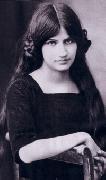 |
Jeanne Hebuterne -- Click Here
|
|
(April 6, 1898 C January 25, 1920) was a French artist, best known as the frequent subject and common-law wife of the artist Amedeo Modigliani.
Born in Paris to a Roman Catholic family, her father, Achille Casimir Hebuterne, worked at Le Bon Marche department store. |
|
 |
Jean-Louis Hamon -- Click Here
|
|
Plouha 1821 - Saint - Raphael, 1874.
French Academic Painter, 1821-1874.
Studied under Charles Gleyre.
French Academic Painter, 1821-1874. Studied under Charles Gleyre. French painter and designer. He was encouraged to practise drawing by the Brothers of the Christian Doctrine at Lannion. Through the intervention of Felicite-Robert de Lamennais (1782-1854), he was made drawing-master at a religious seminary at Ploermel, Brittany, although at this stage he had received no instruction and had never seen an oil painting. In 1840 he asked his conseil general for help and left for Paris the following year with a grant of 500 francs. He went to Delaroche's studio, where he made friends with Picou, Jean-Leon Gereme, Jean Aubert (1824-1906) and Jean Eugene Damery (1823-53). Charles Gleyre, who took over Delaroche's studio in 1843, encouraged and protected him during years of poverty. |
|
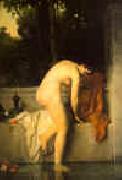 |
Jean-Jacques Henner -- Click Here
|
|
1829-1905
French
Jean Jacques Henner Galleries
French painter. He was born into a peasant family in the Sundgau and received his first artistic training at Altkirch with Charles Goutzwiller (1810-1900) and later in Strasbourg in the studio of Gabriel-Christophe Gu?rin (1790-1846). In 1846 he enrolled at the Ecole des Beaux-Arts in Paris as a pupil of Michel-Martin Drolling and, from 1851, of Francois-Edouard Picot. While a student he was particularly drawn to portraiture, and during his frequent visits to Alsace he made portraits of his family as well as of the notables of the region. He also painted scenes of Alsatian peasant life. |
|
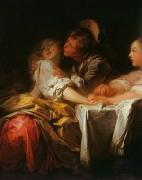 |
Jean-Honore Fragonard -- Click Here
|
|
French Rococo Era Painter, 1732-1806
was a French painter and printmaker whose late Rococo manner was distinguished by remarkable facility, exuberance, and hedonism. One of the most prolific artists active in the last decades of the Ancien Regime, Fragonard produced more than 550 paintings , of which only five are dated. Among his most popular works are genre paintings conveying an atmosphere of intimacy and veiled eroticism. He was born at Grasse, Alpes-Maritimes, the son of François Fragonard, a glover, and Françoise Petit. He was articled to a Paris notary when his father's circumstances became strained through unsuccessful speculations, but showed such talent and inclination for art that he was taken at the age of eighteen to François Boucher, who, recognizing the youth's rare gifts but disinclined to waste his time with one so inexperienced, sent him to Chardin's atelier. Fragonard studied for six months under the great luminist, then returned more fully equipped to Boucher, whose style he soon acquired so completely that the master entrusted him with the execution of replicas of his paintings. Though not yet a pupil of the Academy, Fragonard gained the Prix de Rome in 1752 with a painting of "Jeroboam Sacrificing to the Golden Calf", but before proceeding to Rome he continued to study for three years under Charles-Andre van Loo. In the year preceding his departure he painted the "Christ washing the Feet of the Apostles" now at Grasse cathedral. On September 17, 1756, he took up his abode at the French Academy in Rome, then presided over by Charles-Joseph Natoire. While at Rome, Fragonard contracted a friendship with a fellow painter, Hubert Robert. In 1760, they toured Italy together, executing numerous sketches of local scenery. It was in these romantic gardens, with their fountains, grottos, temples and terraces, that Fragonard conceived the dreams which he was subsequently to render in his art. He also learned to admire the masters of the Dutch and Flemish schools (Rubens, Hals, Rembrandt, Ruisdael), imitating their loose and vigorous brushstrokes. Added to this influence was the deep impression made upon his mind by the florid sumptuousness of Giovanni Battista Tiepolo, whose works he had an opportunity to study in Venice before he returned to Paris in 1761. In 1765 his "Coresus et Callirhoe" secured his admission to the Academy. It was made the subject of a pompous (though not wholly serious) eulogy by Diderot, and was bought by the king, who had it reproduced at the Gobelins factory. Hitherto Fragonard had hesitated between religious, classic and other subjects; but now the demand of the wealthy art patrons of Louis XV's pleasure-loving and licentious court turned him definitely towards those scenes of love and voluptuousness with which his name will ever be associated, and which are only made acceptable by the tender beauty of his color and the virtuosity of his facile brushwork; |
|
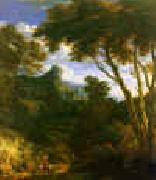 |
Jean-Baptiste Huysmans -- Click Here
|
|
Flemish
1654-1716
|
|
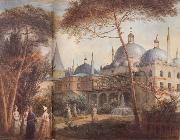 |
Jean-Baptiste Hilair -- Click Here
|
|
French, 1753-1822 |
|
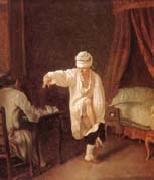 |
jean Huber -- Click Here
|
|
Swiss Painter (b. 1721, Geneve, d. 1786, Bellevue) ,
Geneva1721-1786
Geneva1721-1786,Silhouettist, painter, draughtsman and printmaker. His paternal ancestors were patrician Genevese merchant bankers. As a young man he soldiered at Kassel in Germany and in Italy, where he fought for Savoy in the War of the Austrian Succession (1740-48). In 1752 he was elected to Geneva's Council of Two Hundred and served his native city as a magistrate. He had no formal artistic training, but from his youth he clipped out of paper or cards freehand profiles of a kind that later came to be called silhouettes. |
|
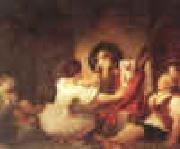 |
Jean Honore Fragonard -- Click Here
|
|
1732-1806
French
Jean Honore Fragonard Locations
French painter. He studied with François Boucher in Paris c. 1749. He subsequently won a Prix de Rome, and while in Italy (1756 ?C 61) he traveled extensively and executed many sketches of the countryside, especially the gardens at the Villa d Este at Tivoli, and developed a great admiration for the work of Giovanni Battista Tiepolo. In 1765 his large historical painting Coresus Sacrifices Himself to Save Callirhoë was purchased for Louis XV and won Fragonard election to the French Royal Academy. He soon abandoned this style to concentrate on landscapes in the manner of Jacob van Ruisdael, portraits, and the decorative, erotic outdoor party scenes for which he became famous (e.g., The Swing, c. 1766). The gentle hedonism of such party scenes epitomized the Rococo style. Although the greater part of his active life was passed during the Neoclassical period, he continued to paint in a Rococo idiom until shortly before the French Revolution, when he lost his patrons and livelihood.
|
|
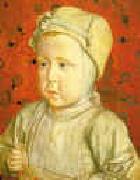 |
Jean Hey -- Click Here
|
|
Flemish Northern Renaissance Painter, active 1480-1500
Until the late 20th century, the name of the painter of the Moulins Triptych was unknown, although art historians identified a number of other works that were evidently by the same hand. The first monograph on the Master of Moulins, written in 1961 by Madeleine Huillet d'Istria, argued that this artist did not actually exist, and that more than 12 different artists were responsible for the corpus of works traditionally ascribed to him. The Master's identity was established after an inscription was found on the reverse of a damaged painting, Christ with Crown of Thorns (1494) in the Royal Museums of Fine Arts of Belgium, Brussels, identifying the artist as Jean Hey, teutonicus and pictor egregius ("the famous painter"), and identifying the patron as Jean Cueillette, who was secretary to the King and an associate of the Bourbon family.Stylistic similarities link this painting to the works attributed to the Master of Moulins. The Master of Moulins appears to have been the court painter for the Bourbons, and from a surviving account for 1502-03, it is clear that the court painter's name was Jean; other candidates once considered plausible, such as Jean Perreal and Jean Prevost, have proven untenable in the light of subsequent research. The term "Teutonicus", or "German" included Flemings at this date. |
|
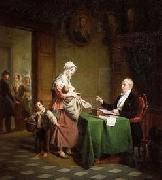 |
Jean Henri De Coene -- Click Here
|
|
Jean Henri De Coene, a Belgian painter of genre and historical subjects, was born at Nederbrakel in 1798. |
|
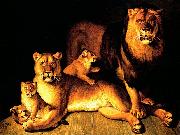 |
Jean Baptiste Huet -- Click Here
|
|
(Paris, 15 October 1745-Paris, 27 January 1811) was a French painter, engraver and designer associated with pastoral and genre scenes of animals in the Rococo manner, influenced by François Boucher.
Born into a family of artistse his uncle was Christophe Huet, his father Nicolas Huetehe apprenticed with the animal painter Charles Dagomer, a member of the painters' guild, the Academie de Saint-Luc, Paris, who was working in the 1760s. Huet's interest in printmaking and his acquaintance with Gilles Demarteau, who later engraved many of his compositions, both date from this period. About 1764 Huet entered the studio of Jean-Baptiste Le Prince, where he further developed his printmaking skills, largely reproducing his own paintings, a method of publishing them with some profit.
In 1768 he was approved by the Academie Royale, and 29 July 1769 he was received (reçu) in the minor category (petite maniere) of painter of animals and was well received in the public reviews when he began to exhibit at the Paris Salon that same year, with a Dog Attacking Geese, now at the Louvre. He continued to exhibit annually until 1789, through his attempts at the grand manner of history painting, considered the noblest genre, were not met with approval. |
|
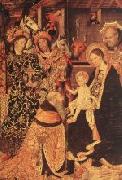 |
Jaume Huguet -- Click Here
|
|
Spanish Early Renaissance Painter, C.1415-1492 |
|
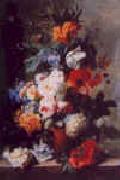 |
Jan van Huysum -- Click Here
|
|
1682-1749
Dutch
Jan Van Huysum Galleries
He was the brother of Jacob van Huysum, and the son of Justus van Huysum, who is said to have been expeditious in decorating doorways, screens and vases. A picture by Justus is preserved in the gallery of Brunswick, representing "Orpheus and the Beasts in a wooded landscape", and here we have some explanation of his son's fondness for landscapes of a conventional and Arcadian kind; for Jan van Huysum, though skilled as a painter of still life, believed himself to possess the genius of a landscape painter.
Half his pictures in public galleries are landscapes, views of imaginary lakes and harbours with impossible ruins and classic edifices, and woods of tall and motionless trees-the whole very glossy and smooth, and entirely lifeless. The earliest dated work of this kind is that of 1717, in the Louvre, a grove with maidens culling flowers near a tomb, ruins of a portico, and a distant palace on the shores of a lake bounded by mountains.
Some of the finest of van Huysum's fruit and flower pieces have been in English private collections: those of 1723 in the earl of Ellesmere's gallery, others of 1730-1732 in the collections of Hope and Ashburton. One of the best examples is now in the National Gallery, London (1736-1737). No public museum has finer and more numerous specimens than the Louvre, which boasts of four landscapes and six panels with still life; then come Berlin and Amsterdam with four fruit and flower pieces; then St Petersburg, Munich, Hanover, Dresden, the Hague, Brunswick, Vienna, Carlsruhe, Boston and Copenhagen. |
|
|